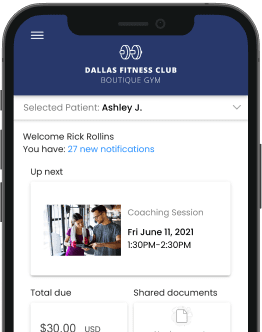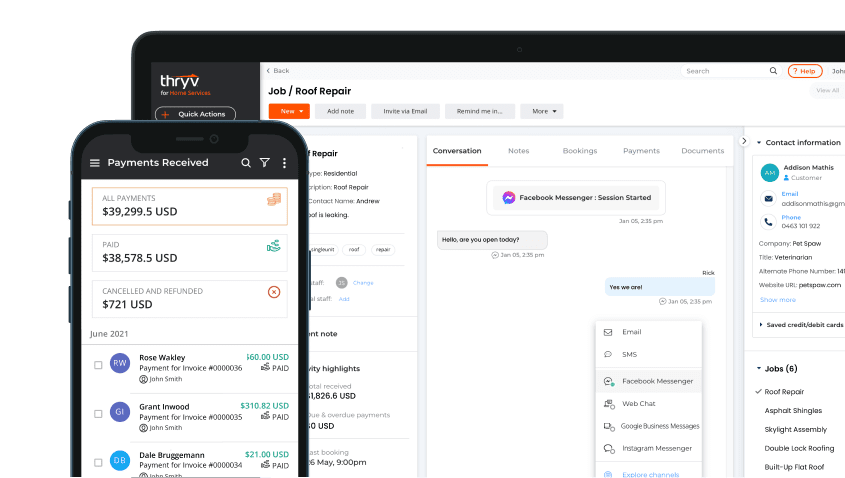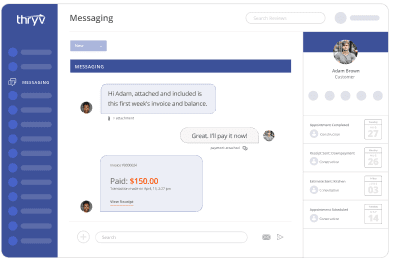Pricing for plumbing services isn’t always cut and dry. One job might take 20 minutes, and another might stretch across two days. And when you factor in labor, materials, travel time, permits, and overhead, things get complicated fast.
But don’t worry — you don’t need to wing it. Whether you’re just figuring out how to start a plumbing business or you’ve been in the field for years, this guide will walk you through how to price plumbing jobs so they’re fair, competitive, and profitable.
Know your plumbing costs
Start with what it costs to do the job. Before you can turn a profit, you need to know exactly what you’re spending — and that means digging into every cost involved in running your plumbing business.
Labor
Calculate what it costs for both your time and your crew’s. That includes hourly wages, payroll taxes, health benefits, workers’ comp, and your own salary. If you’re doing the work, you deserve to be paid like any other skilled tradesperson.
Materials and supplies
Tally up everything you’ll need to complete the job, from pipe fittings and valves to sealants and fixtures. Include consumables like solder and tape, as well as mileage or delivery fees to get them to the job site.
Overhead
These are the costs that keep your business running, even when you’re not on a job. Think marketing, rent for your office (if you have one), accounting software, insurance for plumbing services, gas for your truck, licensing fees, uniforms, equipment maintenance, your cell phone plan — all of it adds up. A good rule of thumb is to allocate a percentage of each job to cover overhead.
Permits and compliance
Some jobs require permits, inspections, or special certifications. Make sure you factor these into your estimates where applicable.
When you add all these elements together, you get your break-even cost. Then, you can apply a markup to reach your profit goals. Most plumbing businesses aim for a profit margin between 20% and 40%, depending on their local market and service offerings.
Knowing your costs not only ensures you’re charging enough to stay in business — it also helps you quote jobs confidently and competitively.
Choose a pricing model for your plumbing business
There’s more than one way to charge for plumbing work. The pricing model you choose can impact your profitability, your customer satisfaction, and how smooth your day-to-day operations feel.
Here are some common options — each with its own strengths and trade-offs:
Hourly rate
Simple, flexible, and easy to explain. This model is a great fit for service calls or troubleshooting jobs where the scope is unknown. You charge for the time it takes, and customers pay for exactly what they get.
- Pros: Straightforward, especially for open-ended or unpredictable jobs. Customers pay for your time and materials as needed.
- Cons: Some customers may feel uncertain about the final price, and it can discourage efficiency if not managed well.
- Best for: Diagnostics, troubleshooting, or complex repairs where the full scope isn’t clear at the start.
Flat rate
Ideal for routine or well-defined jobs. Flat-rate pricing helps you set clear expectations with customers and streamlines invoicing. Just make sure your pricing includes a buffer for unexpected hiccups.
- Pros: Builds trust with customers by giving them a fixed price upfront. Streamlines quoting and invoicing.
- Cons: If the job takes longer than expected, you eat the extra time and cost.
- Best for: Standard services with predictable scopes, like faucet replacements or water heater installs.
Tiered packages
Offer multiple service levels — such as basic, standard, and premium — for common tasks like water heater installation or drain cleaning. These bundles can make your pricing more appealing while increasing your average service size.
- Pros: Gives customers options based on their budget and needs. Can help boost your average ticket size.
- Cons: Requires more prep work to define what each package includes, and you’ll need to clearly communicate the value differences.
- Best for: Repeatable jobs like drain cleaning, maintenance services, or fixture upgrades.
Subscription pricing
A newer model, but one with real staying power. Offer customers ongoing maintenance plans or priority service subscriptions for a monthly or quarterly recurring fee. This gives you reliable income and helps build long-term relationships.
- Pros: Generates steady, recurring revenue and builds long-term customer relationships. Encourages regular maintenance, which reduces emergency calls.
- Cons: Takes time to build a subscriber base, and not all customers may see the value right away.
- Best for: Ongoing services like annual inspections, seasonal plumbing tune-ups, or priority scheduling.
You don’t have to pick just one model. Many plumbing businesses mix and match based on the job type. For example, you might charge flat rates for installs, hourly for diagnostics, and offer optional service plans.
Research the market in your area
Even if you’re confident in your pricing, it’s worth checking what other plumbers charge in your service area. Research helps you stay competitive — and ensures you’re not underselling yourself or pricing too high for your market.
Here are a few easy ways to gather intel:
- Browse competitor websites to see if they list pricing or service packages.
- Use business directories and review sites to compare service offerings.
- Chat with other plumbers in trade groups or online forums.
Make sure you’re comparing apples to apples. Consider things like the size of the business, their reputation, and the types of services offered. You don’t need to match their pricing, but knowing the range helps you position your services better. Instead of racing to the bottom, aim to be the best value for the quality of work and service you deliver.
Consider value-based pricing
Sometimes, it’s not just about what the job costs you — it’s about what it’s worth to the customer. Value-based pricing allows you to charge based on the outcome and benefit, not just the inputs. If you’re solving a big problem quickly, delivering premium results, or bringing deep expertise to the table, your pricing should reflect that.
This approach works especially well when:
- You’re responding to an emergency. A customer with a burst pipe at midnight isn’t just paying for a wrench and an hour of your time — they’re paying for a fast, stress-relieving solution.
- You’re handling upgrades or remodels. These projects often involve detailed work, aesthetic decisions, and customer trust. That extra value deserves to be priced accordingly.
- You’re delivering specialty work. Whether it’s radiant heating, tankless water heaters, or luxury bathroom installs, your niche skills bring extra value to the table.
Value-based pricing can help increase your margins without feeling pushy or unfair. Just make sure your estimates clearly explain the scope and benefits. Position your pricing around the outcome — peace of mind, comfort, or convenience — not just the task.
Use a plumbing cost calculator
If you’re not into spreadsheets, no worries. A plumbing cost calculator can help you quickly and accurately estimate your prices without all the math. It’s a great way to check your margins and see if you’re charging enough to stay profitable.
A good plumbing cost calculator lets you:
- Input material, labor, and supply costs
- Add your overhead and markup
- View your break-even point and profit margin in real time
It’s one of the simplest plumbing business tools you can use to get pricing right.
Review your pricing and adjust regularly
Plumbing isn’t static, and your pricing shouldn’t be either. If you want to keep your margins healthy and your business sustainable, build in regular check-ins to assess and adjust your rates.
Here’s what to monitor:
- Material costs: Prices for copper, PVC, and parts can rise quickly. Make sure your estimates reflect real-time costs.
- Fuel and travel expenses: If you’re on the road a lot, rising fuel prices can quietly eat into your profits.
- Competitor pricing: Revisit your market research at least once a year. If competitors have adjusted their rates, you should evaluate whether yours still holds up.
- Customer feedback: If you hear consistent feedback that your prices are either too high or surprisingly low, it’s worth a closer look.
Revisit your pricing quarterly or annually, and don’t be afraid to make updates. When it’s time to raise your rates, let customers know in advance. Be transparent about the reason — whether it’s rising material costs, added services, or improved quality — and emphasize the continued value they’re getting from your work.
Communicating confidently and proactively can help keep customers loyal while supporting your growth.
How Thryv helps with plumbing pricing
Thryv®’s software for plumbing businesses helps you manage your entire operation — from the first customer interaction to the final payment. It’s built for small businesses and plumbing pros that want to market, sell, and grow — without getting buried in admin work.
With Thryv, you can:
- Create accurate, professional quotes that reflect your costs and desired profit margins.
- Use Thryv’s job cost calculator to quickly plug in labor, materials, and markup for real-time pricing calculations.
- Schedule jobs, send estimates, invoice customers, and accept payments — all in one place.
- Access everything on the go, so you can run your business from your phone, tablet, or laptop.
- Automate routine tasks like appointment reminders, follow-ups, and marketing campaigns.
- See performance trends through dashboards and reports that help you make better pricing decisions.
Thryv also integrates with the tools you already use and offers friendly support from real people who understand small business challenges. If you’re looking for plumbing business tools that simplify pricing and help you grow, Thryv has your back.
Additional resources
10 Plumbing Lead Generation Strategies for Small Businesses
Small Business Software for Plumbing Businesses


